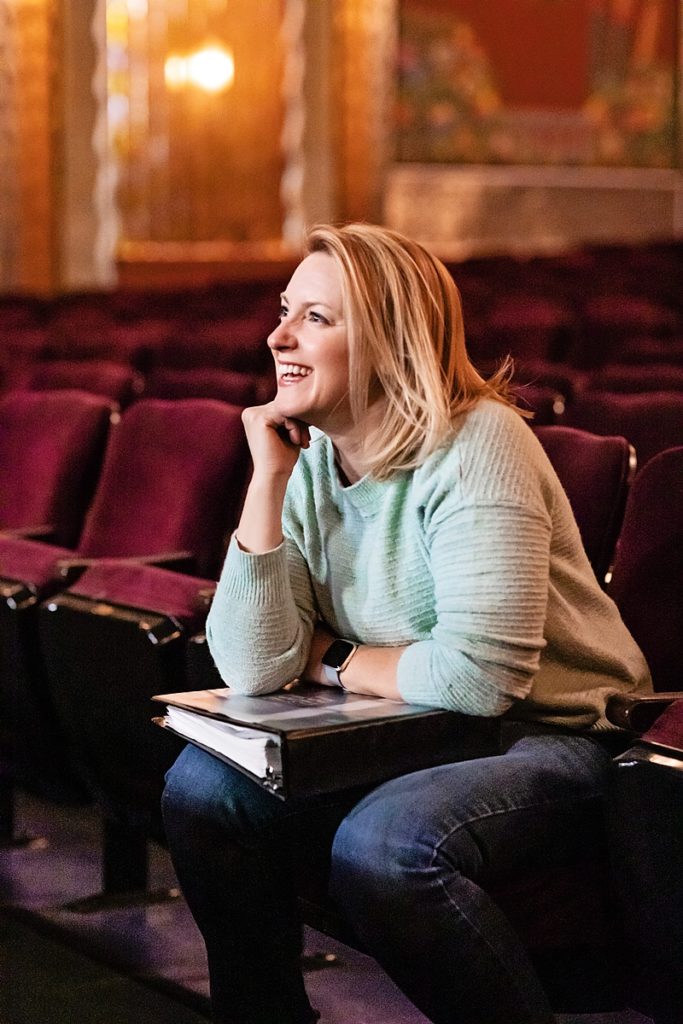Amber Mak
By Jen Banowetz
December 2022 View more Spotlight
Wheaton director leads Paramount’s The Sound of Music

When Amber Mak was in third grade, she said she wanted to be a choreographer when she grew up. Her 8-year-old self pretty much nailed that prediction.
While at Northwestern University, Mak began performing professionally with Chicago Shakespeare Theater in the summers, and by her senior year was doing eight shows a week at local regional theaters while finishing her degree in dance and communication studies. She continued to perform nationally in all sorts of shows for the next decade and a half, eventually assisting Susan Stroman on Broadway’s Big Fish. After assisting on more than a dozen other shows, she began choreographing and directing, including in Aurora, helming Paramount Theatre’s productions of Disney’s Little Mermaid and Disney’s Beauty and the Beast.
This holiday season the Wheaton mom of two is tackling another fan favorite for Paramount—the venerable Rodgers and Hammerstein classic The Sound of Music. Not the easiest mountain to climb, but she has a cast and crew of 150 helping bring the tale of the von Trapps to life.
Q: How do you make a beloved musical seem fresh?
A: I always try to approach the material as if I have never heard the story before, as well as ask the question, “Why do we need to tell this story now for this audience?” The Sound of Music has so many parallel story lines to what is currently happening in the world today, so it was not a hard question to answer. However, I want to make sure that the show is accessible to a whole new generation of people. I have a 5-year-old, [and] this story is brand new to her, so her perspective has been invaluable.
Q: What’s challenging about directing?
A: Directing is like putting together a giant puzzle. We start with designing the show almost a year in advance. As a director not only am I responsible for the overall vision of the show but also every detail from fabric selection to communicating with every design team to make sure they have the specifics needed from me to accomplish telling the story. Then we add in the cast, coordinating schedules, and then diving into actual direction and choreography of the piece.
Q: What’s your directing process like?
A: Having performed for 15 years and assisted for a while, I saw many different directing styles and processes, and one of the reasons I wanted to direct was to truly focus on the collaborative process of creating the show. My No. 1 goal is to create a brave, safe space in which each member of the team—from designers to crew to actors—feels they can do their best work and that we are creating the show together. Each person has their perspective to bring to a story. I live in process, not product.
Q: Any advice for up-and-coming actors?
A: I’ve learned how important it is for young performers to understand the idea of being a good listener, partner, and team player when actually performing. I think many young performers and parents put their kids in theater because they like the attention at first, and I often see the young performers only focus on what their lines or dance or solo are, but it is so important that they learn to listen and be present with those onstage with them.
Performing is much more about listening and responding and being able to bring yourself to a process than it is about what you individually need to do. I also believe that young performers—well, any performer, actually—needs to be a well-rounded person with many different life experiences to bring to a show and process. You obviously need to have some training in voice, improv, dance, and acting, but I always love working with people who have passions, connections, and interests outside of theater itself.
Photo courtesy of Bari Baskin/Time Stops Photography


